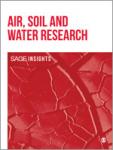Contemporary fire regimes provide a critical perspective on restoration needs in the Mexico-United States borderlands
The relationship between people and wildfire has always been paradoxical: fire is an essential ecological process and management tool, but can also be detrimental to life and property. Consequently, fire regimes have been modified throughout history through both intentional burning to promote benefits and active suppression to reduce risks. Reintroducing fire and its benefits back into the Sky Island mountains of the United States-Mexico borderlands has the potential to reduce adverse effects of altered fire regimes and build resilient ecosystems and human communities. To help guide regional fire restoration, we describe the frequency and severity of recent fires over a 32-year period (1985-2017) across a vast binational region in the United States-Mexico borderlands and assess variation in fire frequency and severity across climate gradients and in relation to vegetation and land tenure classes. We synthesize relevant literature on historical fire regimes within 9 major vegetation types and assess how observed contemporary fire characteristics vary from expectations based on historical patterns. Less than 28% of the study area burned during the observation period, excluding vegetation types in warmer climates that are not adapted to fire (eg, Desertscrub and Thornscrub). Average severity of recent fires was low despite some extreme outliers in cooler, wetter environments. Midway along regional temperature and precipitation gradients, approximately 64% of Pine-Oak Forests burned at least once, with fire frequencies that mainly corresponded to historical expectations on private lands in Mexico but less so on communal lands, suggesting the influence of land management. Fire frequency was higher than historical expectations in extremely cool and wet environments that support forest types such as Spruce-Fir, indicating threats to these systems possibly attributable to drought and other factors. In contrast, fires were absent or infrequent across large areas of Woodlands (~73% unburned) and Grasslands (~88% unburned) due possibly to overgrazing, which reduces abundance and continuity of fine fuels needed to carry fire. Our findings provide a new depiction of fire regimes in the Sky Islands that can help inform fire management, restoration, and regional conservation planning, fostered by local and traditional knowledge and collaboration among landowners and managers.

